Cats are often portrayed as mysterious, aloof creatures, but anyone who shares their home with a feline knows their antics can be baffling, hilarious, a little too clever. While they might not be planning world domination, their behaviors suggest they’re always a few steps ahead, using their cunning instincts to manipulate their environment — and their humans. Here’s a look at 14 cat behaviors that prove your pet might just be a low-key evil genius.
1. The Art of Door Opening

You’ve probably noticed your cat intently watching you open doors, as if they’re trying to unlock the universe’s mysteries. Before you know it, they’re stretching up on their hind legs, pawing at the doorknob, and voila — they’ve figured out how to open doors themselves. It’s a skill that’s both impressive and slightly alarming, especially when you find them somewhere they’re not supposed to be. This ability to study and replicate your actions is a hallmark of their intelligence.
According to Dr. John Bradshaw, an expert in cat behavior at the University of Bristol, cats have a remarkable capacity for observational learning. They watch and learn from their human companions, often mimicking behaviors that are beneficial to them. This skill isn’t just about opening doors; it’s about understanding cause and effect. It’s this perceptiveness that makes them such resourceful little creatures.
2. The Midnight Zoomies
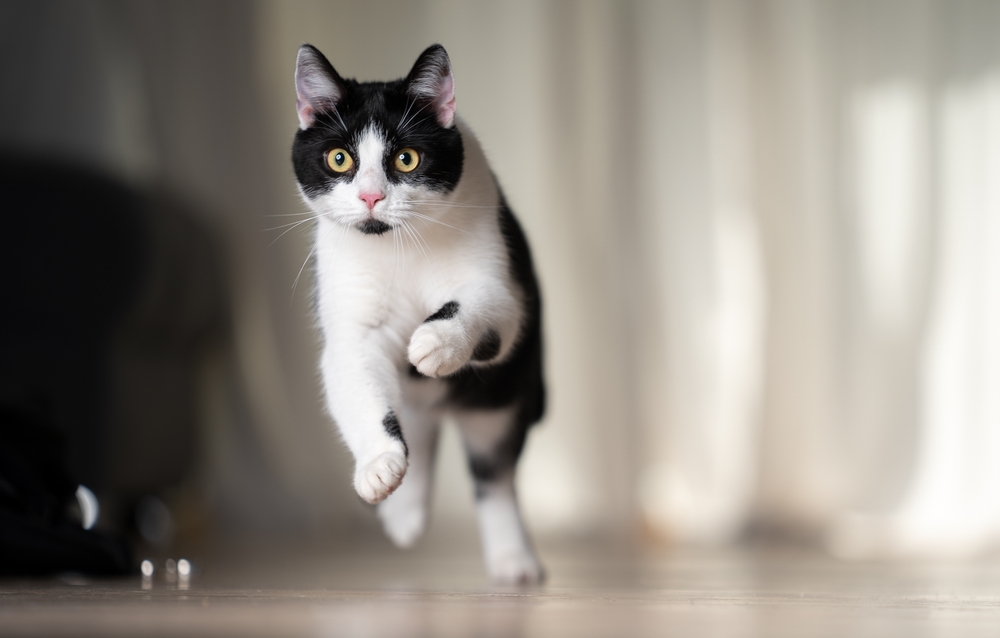
Just as you’re settling into a deep sleep, your cat decides it’s the perfect time for a full-on sprint around the house. The midnight zoomies are a phenomenon familiar to many cat owners, where your feline seems possessed by an invisible force. One second they’re at the foot of your bed, and the next they’re racing through the halls like a furry tornado. This burst of energy is both entertaining and perplexing.
Cats are crepuscular animals, meaning they’re most active during the dawn and dusk hours. Their nocturnal antics are a blend of leftover wild instincts and the day’s pent-up energy. While it might be disruptive to your sleep, it’s a reminder of their wild roots — and perhaps a plot to keep you just tired enough to acquiesce to their whims. It’s hard not to wonder if this behavior is just part of a master plan to ensure you’re always a tad off-balance.
3. The Knack Of Finding The Most Inconvenient Spot

Have you ever noticed your cat’s knack for sitting exactly where you need to be? Whether it’s on your keyboard, in the middle of a book, or on the clothes you’re about to wear, they seem to have a sixth sense for inconvenience. It’s as if they’re testing your patience or perhaps marking their territory in the most passive-aggressive way possible. This behavior is both a source of frustration and amusement for cat owners.
A study published in the journal Animal Cognition suggests that cats are excellent at reading human cues and adjusting their behavior accordingly. They seem to understand when they have your attention and when they don’t — and often choose their moments strategically. By sitting on your laptop or book, they might be both seeking your attention and interrupting whatever’s dividing it. It’s a clever ploy to make sure they remain the center of your world.
4. The Food Heist
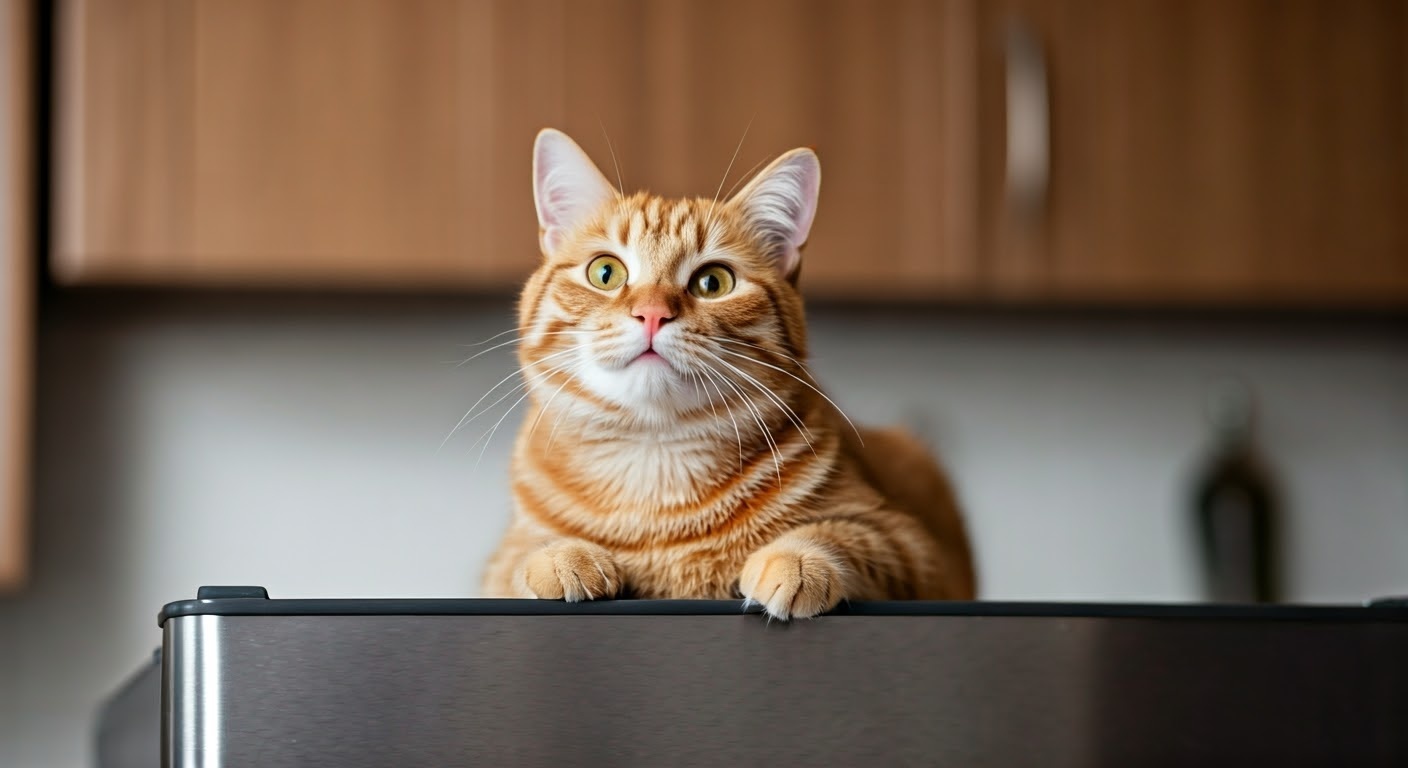
You turn your back for one second, and your snack has mysteriously disappeared. Cats are masters of the food heist, stealthily swiping morsels when you’re not looking. It’s a skill that requires timing, precision, and an acute sense of opportunity. One moment they’re innocently lounging by your feet, and the next, they’ve made off with a bite of your sandwich.
Their opportunistic nature is a nod to their survival instincts, honed over thousands of years. In the wild, cats had to seize every opportunity for food, and this behavior persists even in your kitchen. While it might seem mischievous, it’s just another example of their cleverness in action. They know what they want and aren’t afraid to take it when you’re distracted.
5. The Disappearing Act

One minute your cat is right next to you, and the next, they’ve vanished into thin air. Cats have an uncanny ability to disappear, only to reappear hours later as if nothing happened. It’s as if they have secret portals scattered around the house, allowing them to slip away undetected. This Houdini-like behavior leaves you puzzled and a little awestruck.
According to Dr. Mikel Delgado, a cat behavior expert at UC Davis, this disappearing act is partly due to their natural instinct to find safe, quiet places to rest. Cats often seek out hidden nooks where they can relax and observe without being disturbed. This behavior highlights their need for privacy and their strategic thinking in choosing spots that are out of sight. Their ability to vanish is just another clue that they’re always one step ahead of you.
6. The Hypnotic Gaze

Ever feel like your cat is staring directly into your soul? That unblinking gaze can feel both unnerving and mesmerizing, as if they’re trying to communicate telepathically. Cats often use eye contact to assert dominance or express affection, making it a multifaceted form of communication. It’s a reminder that while they may not speak your language, they’re always finding ways to connect.
This gaze is not just a random behavior; it’s a calculated social tool. When a cat stares at you, they’re gauging your reactions and assessing the situation. In the animal kingdom, prolonged eye contact can be a sign of aggression, but with cats, it can also be a way to bond or demand attention. It’s a testament to their complex social intelligence that they’ve adapted this behavior for different purposes.
7. The Strategic Knock Over
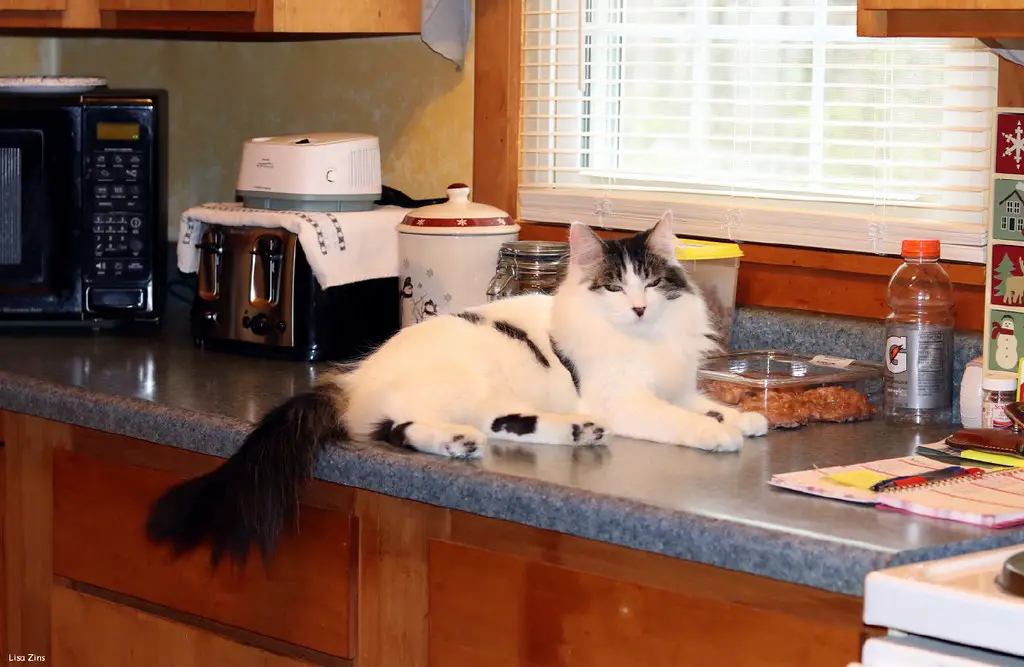
You leave a glass of water on the table, and seconds later, your cat sends it crashing to the ground. This strategic knock over is a classic cat move that leaves many people wondering if their feline has a vendetta against gravity. While it may seem like pure mischief, this behavior is often a calculated decision. Cats understand that tipping things over gets your attention — and they use it to their advantage.
Research published in the journal *Behavioural Processes* indicates that cats learn by observation and experimentation. They are driven by curiosity and often knock things over as a way to interact with their environment. By observing the reactions, cats gather information about how things work and the consequences of their actions. This mix of exploration and manipulation is what makes them such clever creatures.
8. The Selective Hearing
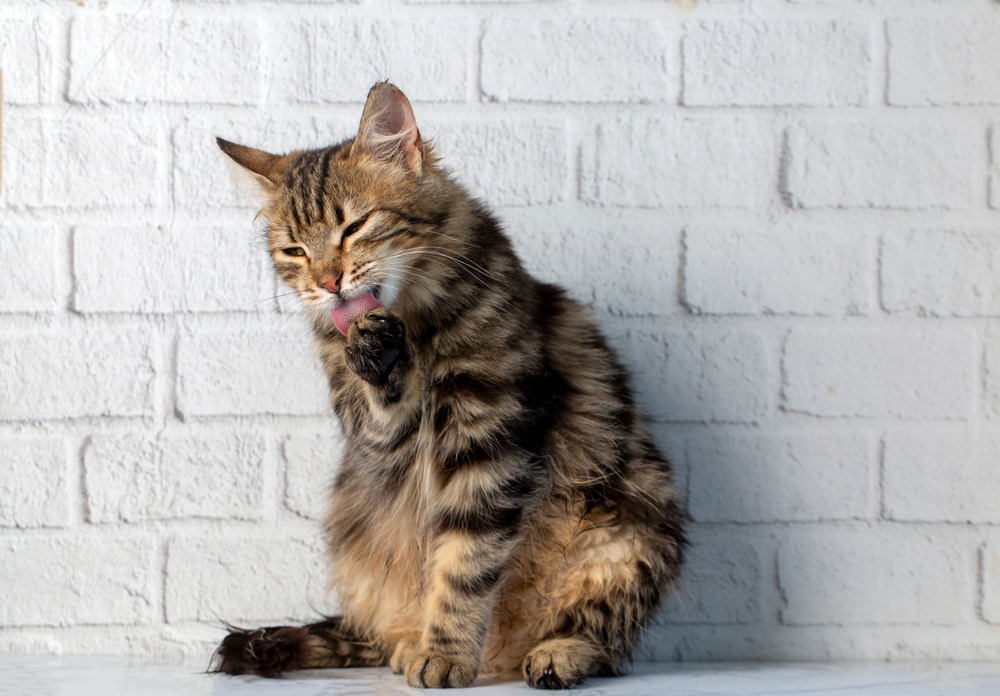
Your cat seems to hear the sound of a can opening from a mile away, yet their name spoken loudly doesn’t elicit even a flick of the ear. This selective hearing is a hallmark of their independent nature, allowing them to choose when and what to respond to. It’s as if they have an internal filter for what’s most relevant to their interests. This behavior can be both exasperating and fascinating.
While it might seem like they’re ignoring you, cats are actually very attuned to their environment. They’ve evolved to discern important sounds — like the rustling of food — while filtering out the less relevant noises. This selective attention helps them conserve energy and focus on survival cues in the wild. At home, it’s just another example of their finely tuned senses at work.
9. The Box Obsession

No matter how many expensive toys you buy, it’s the humble cardboard box that wins your cat’s heart. This obsession with boxes is a widespread feline quirk, often leaving owners baffled by their pet’s preference for simplicity. Cats find solace in enclosed spaces, which offer a sense of security and a vantage point to observe their surroundings. It’s a behavior that taps into their instinctual need for safety.
Boxes provide the perfect hideaway where cats can rest and watch the world go by without being seen. This love for boxes is not just about comfort; it’s also about strategy. They use these spaces to retreat from perceived threats and conserve energy. It’s a simple yet effective reminder that sometimes, the best things in life are the ones that offer peace and protection.
10. The Curtain Climbing
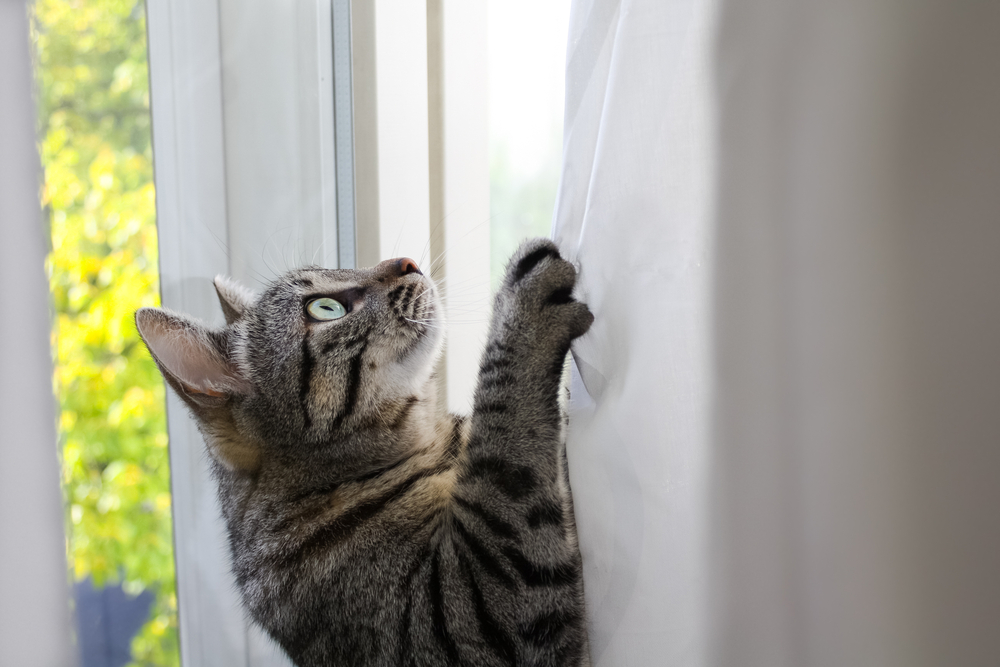
You may find your cat scaling the curtains like a seasoned rock climber, a behavior that’s both amusing and exasperating. This climbing habit is rooted in their natural instincts; in the wild, climbing helps them escape predators and survey their territory. While your living room is far from the savannah, those instincts remain strong. It’s a testament to their agility and problem-solving skills.
Climbing is also a way for cats to explore their environment and burn off excess energy. It’s part of their daily exercise regimen, essential for their physical and mental well-being. While it might leave your home looking a bit disheveled, it’s a behavior that ensures they stay active and alert. It’s a small price to pay for living with a natural acrobat.
11. The Tail Flick
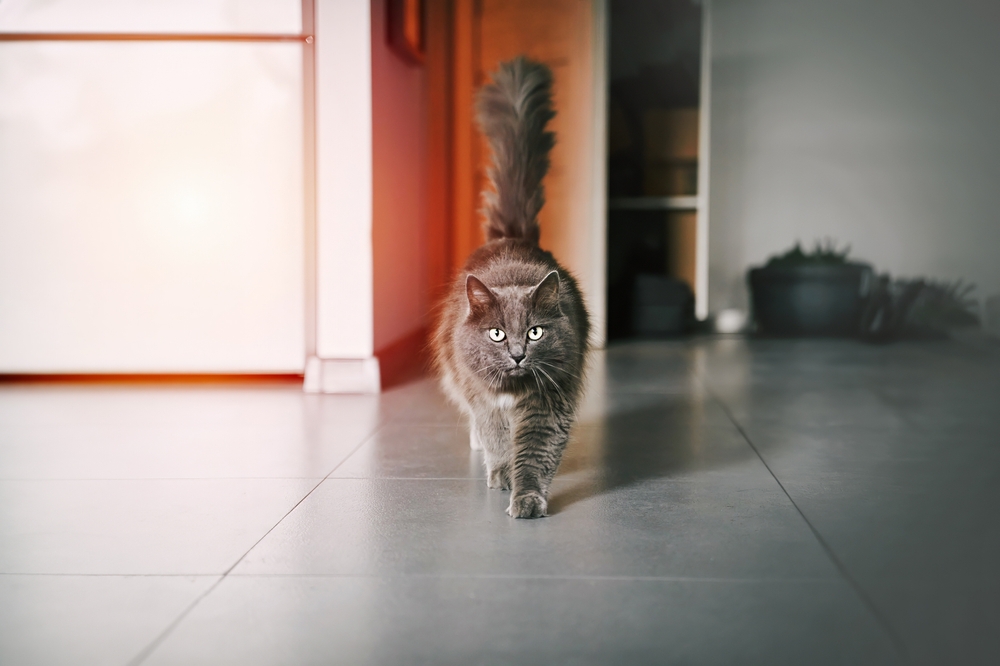
A cat’s tail is a fascinating communication tool, capable of expressing a wide range of emotions. From a gentle flick to a vigorous lash, each movement conveys a different message. This tail language is an integral part of their communication repertoire, often telling you more than their meows ever could. It’s a complex system that requires careful observation to understand fully.
Cats use their tails to signal their mood, intentions, and even level of trust. A flicking tail might indicate irritation or excitement, while a slowly swishing tail can mean they’re feeling playful. Learning to read these signals can enhance your relationship with your cat, as you become more attuned to their needs and emotions. It’s a reminder of the intricate social intelligence that cats possess.
12. The Sudden Bolt
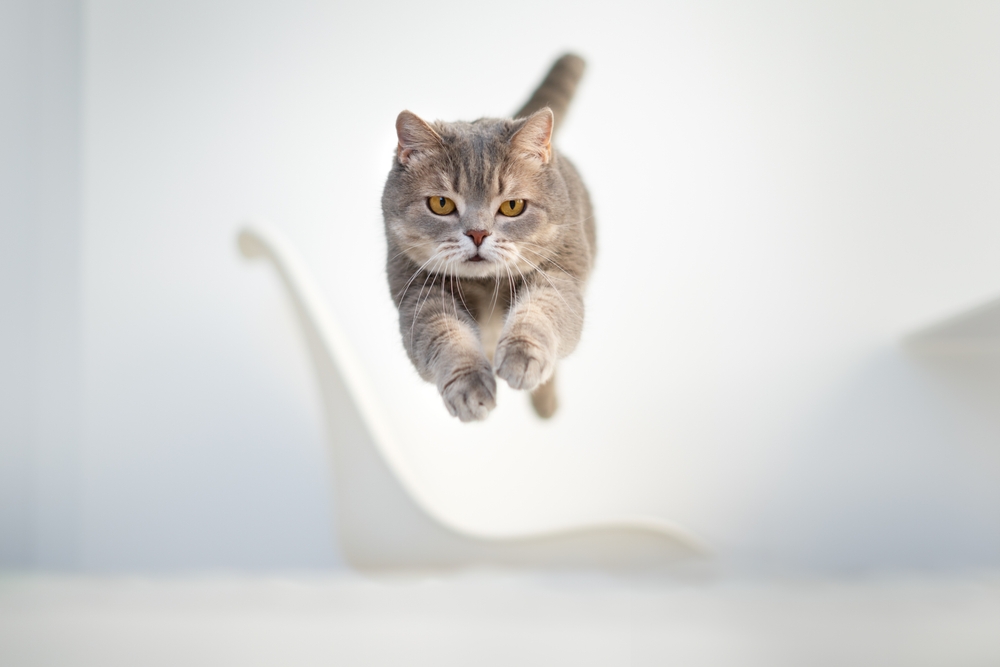
You’ve seen it: your cat is calmly lounging one moment, then suddenly, they dash across the room at lightning speed. This sudden bolt is a burst of energy that seems to come out of nowhere, often leaving you both amused and bewildered. It’s an instinctual response that can be triggered by a sound, a shadow, or just a whim. These unexpected sprints are a testament to their energy and agility.
This behavior is a reflection of their predatory instincts, honed for stalking and capturing prey. In a domestic setting, it’s more about releasing pent-up energy and engaging in play. While it might seem random to us, for cats, it’s just another form of expression and exercise. It’s a spontaneous reminder of their wild ancestry, encapsulating the spirit of adventure that still resides within them.
13. The Lap Pounce
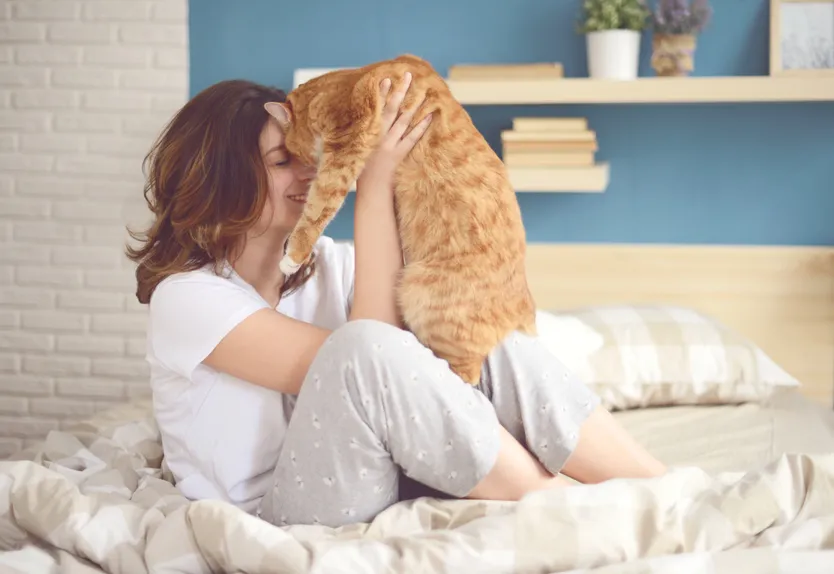
Ever notice that your cat chooses to sit on your lap exactly when you need to get up? This lap capture is a strategic move, ensuring they have your full attention — and perhaps delaying your departure. It’s a clever way to claim ownership and affection in one fell swoop. While it’s an endearing habit, it can also be a test of your resolve.
Cats are adept at recognizing routines and capitalizing on them. By choosing the moments when you’re about to leave, they maximize their time with you and ensure they remain the center of attention. It’s a behavior that’s both affectionate and tactical, highlighting their ability to manipulate their surroundings for comfort and companionship. It’s a subtle, charming reminder of the bond you share.
14. The Unseen Observer

Have you ever felt your cat’s eyes on you, only to turn around and find them watching from a hidden perch? Cats often take on the role of unseen observers, quietly monitoring their environment. This behavior is rooted in their natural instincts to stay alert and aware of their surroundings. It’s both a survival tactic and a way to gather information.
Cats are naturally curious creatures, and they use observation to understand and navigate their world. By watching from a distance, they can assess situations without drawing attention to themselves. This stealthy surveillance is a testament to their cautious nature and intelligence. It’s a behavior that keeps them informed and ready to act, proving they’re always one step ahead.
